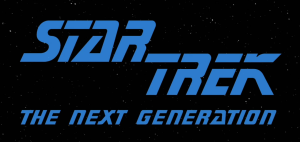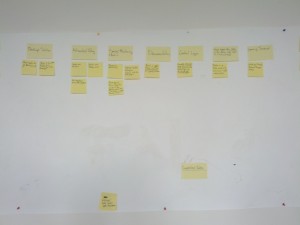
This is the first novel in the series. According to Wikipedia, it was published in 1964. But you’ll notice that this image claims it to be a 1963 Hugo winner.
I recently had the opportunity to re-read the “Demon Prince” series by Jack Vance. In preparing for this post, I found a 104 page treatise on Google Books and the wikipedia article isn’t too bad either in giving a brief description of the world. I suggest checking both of them out. Vance’s settings often surprise with an unusual depth, especially for the work of one man. I won’t go too far into describing the world itself; I’ll leave that to wikipedia. Instead, I’d like to focus on a few of the things that I feel make it unique.
Most science-fiction that imagines a future spread of humanity across the galaxy assumes a one world government. Space travel and all the apparatus necessary for it would require massive organizations and resources. Hence, we have such fictional organizations as Star Fleet. But what if that wasn’t how it was? What if space travel was super cheap? What if people in the lower social orders could afford a simple craft with which they could prospect for new habitable planets like miners in 1849? What would would happen then? Enter the Oikumene and the Beyond.
The series begins in 1524. With the invention of the Jarnell Intersplit drive, humanity resets the calendar. Mankind has had 1500 years to colonize the galaxy before the story even begins. On the subject of the Intersplit function, Vance goes into more physics here than the typical science fantasy fare like Starwars. The Intersplit works something like the warp engines of Star Fleet as they were latter developed (Time Warp, factor 7 anyone?): making a bubble of the space-time around the ship and allowing that bubble to go faster than light speed. This allows Vance to get away from tricky relativity problems. He also makes a point to explain that most people know as much about this device as the typical person in the first world today understands water infrastructure and management. It’s enough that we have running water; why trouble ourselves further in understanding how it works? So, with space travel so cheap and accessible, what did people do? Quite simply, they tried to get away from each other and start new visionary societies based on theological or philosophical ideas.
The Oikumene -the known world of Vance’s series which is also a reference to the known world of antiquity-is as diverse and rich as The United Federation of Planets is monotone and generic. Humanity has fragmented into thousands of variations, cultures, and, in some cases, physical forms; there are even some tongue-in-cheek examples of humans becoming completely different species–let’s just say that Vance has no love for vegetarians. Vance excels at bringing all these cultures alive and making them fascinating. Take the Darsh, for example: a desert people who have a detailed cuisine, several cultural mannerisms, distinct dress, a whole culturally specific system of concepts and jargon, and a national sport which gets described in detail. After a while, I get the feeling that Vance did have a form that he would fill out for every new culture that appeared in his books: some template that worked for him. Unlike Tolkien, however, were the plot of the story is just a sideline for the world building, Vance focuses on the story and his characters. The immersion is much more effective since you’re more engaged in the action: plot plays to world and world plays to plot.
As I said previously, this universe is really old: 15 centuries of development before the story even starts. And Vance does a good job of making this future feel old. Such a contrast to the shiny future that we typically get. He uses a ton of narrative devices to give a feeling of antiquity to a point in time that is as far distant from us today as we are from the year 500. There’s only one thing that breaks this illusion…

This is the Zatab that I’ve been using for most of my reading. It runs an open-source and modified version of Android and comes rooted. I have hundreds of titles in ebook or PDF format and open access to more than I could read in a lifetime. I agree that the experience of reading on a tablet is different than reading a book, but the convenience just outweighs the luxury of having books.
The series has not aged well. At some points in the narrative, the main character is forced to use a slide rule to make calculations. None of the technology is particularly visionary. The universe is still populated with viable magazines and newspapers that do good trade in paper hard copy. Computers are largely non-existent; though, there is an organization that is like a proto-Google which will investigate a subject and provide a report. There was intense irony in the fact that the device with which I used to read the series was far more futuristic than any of the technology in it.
If I were to turn these books into a film project, I think I might hold on to the 1960’s feel of the books and make them with that old science-fiction aesthetic which was so rampant in the 60’s and 70’s. It seems like every Larry Niven book has people wearing skin tone products, and a lot of the alien life forms in The Demon Prince series feel like things you would find on a Star Trek set. William Gibson coined the term “Ray Gun Gothic” for the celebration of science fiction from the golden age: things like Buck Rodgers and Flash Gordon. But here we’re dealing with something different: something that is fused with the ideas of the day and has that tone of psychedelia running through it. Remember that episode of Star Trek where the hippies take over the ship and set course for some Eden planet? Yeah, that’s what I’m talking about. But, instead of a glittering and utopian world view that the protagonist of “The Gernsback Continuum” bemoans, Vance’s future is a dark place where the more shadowy sides of the human condition are allowed to be expressed. It would be neat to see someone take on the project and shoot it like the Star Trek: New Voyages people.
Vance’s series is a true “movable feast”. It practically bursts with creativity, imagination, and erudite references. His vision is so unique and human when compared to other science-fiction writers whose imaginings border on friendly fascism. He might not have been a prophet of things to come like Verne, but he does provide his readers with a journey that captivates and bears up under repeat readings.
 I’m actually a little to young to have experienced the full wonder that was the Text Adventure era; being born in 1976, I could kind of understand what was happening in any given text adventure, but I didn’t really have the patience required to really interact with them. As Don Woods says in Jason Scott’s brilliant documentary, “Get Lamp”:
I’m actually a little to young to have experienced the full wonder that was the Text Adventure era; being born in 1976, I could kind of understand what was happening in any given text adventure, but I didn’t really have the patience required to really interact with them. As Don Woods says in Jason Scott’s brilliant documentary, “Get Lamp”:











